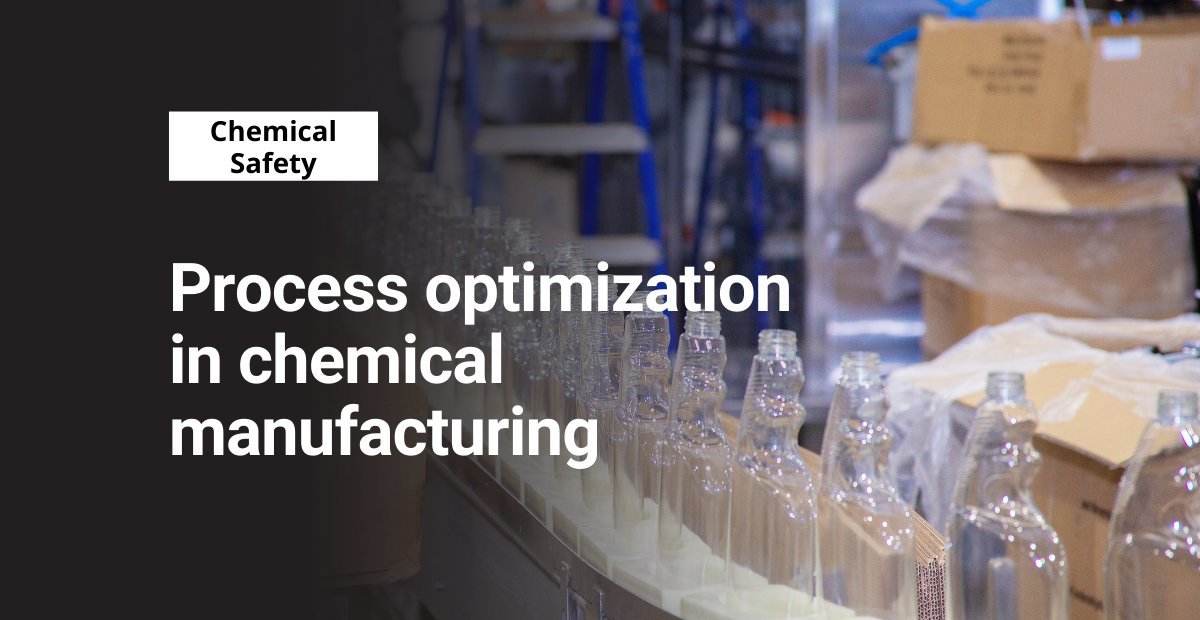Optimization of chemical processes is one of the most critical components of a successful EHS program in chemical manufacturing. I’ve spent years working in various facilities as an EHS specialist, and ensuring both safety and efficiency in these operations has always been a top priority.
In this blog post, I want to discuss what process optimization is, why it’s important, and what the best practices are for pursuing it at your company. Particularly, we’ll delve into how optimization of chemical process strategies can benefit your operations.
What is process optimization?
In essence, process optimization is the practice of improving a process by increasing efficiency, lowering costs, and reducing safety risks.
In the context of chemical manufacturing, process optimization involves modifying equipment, procedures, or raw materials to either improve the quality of the final product or to make the manufacturing process itself more efficient.
Free form!
Use this Excel template to complete a hazardous chemical risk assessment, which may play a role in your efforts towards optimization of chemical processes.
Why is process optimization important?
Chemical manufacturers should implement optimization strategies for a variety of reasons:
1. Optimized processes can help reduce costs by minimizing waste, reducing energy consumption, and improving throughput.
2. Manufacturers can use optimization strategies to produce a higher-quality product and do so more consistently.
3. This approach may reduce the risk of accidents, spills, injuries, and other types of health and safety incidents.
In chemical manufacturing, high product quality (and the consistency with which it’s achieved) are extremely important. That’s because the product can have a major impact on consumer health and environmental safety.
Chemical manufacturing process optimization tips
Below are some of my recommendations for getting started with an optimization project. Note that this is just a basic approach outline. Each step in the approach requires at least several hours of preparation and execution to truly achieve the optimization of chemical processes.
Conduct a process analysis
The first step in optimizing a manufacturing process is to conduct a thorough analysis of it. This analysis should include a review of the:
- Equipment
- Procedures
- Raw materials
- Data collected during the manufacturing process
Identify improvement opportunities
Once you complete your analysis, the next step is to identify opportunities for improvement. In particular, this could involve anything from changing the design of a piece of equipment to modifying a procedure or using a different raw material, leading to optimization of the chemical process itself.
Develop a plan
With a list of opportunities, you’ll then want to make a plan for implementing the changes. Your plan should include your project timeline, your budget, and the key performance indicators that you’ll track.
Test and measure
It may take a while to implement the modifications you’ve made to your existing process. When you’re finished, it’s critical to test and measure the effectiveness of those changes.
You’ll need to evaluate each new variable in the optimization of chemical processes. That’s why it’s important to determine the KPIs you’ll track ahead of time. If you get to this step in the process without having determined your measurable outcomes, you may struggle to determine the success of your project.
This step will likely involve testing your product quality as well, to verify if it has improved, stagnated, or declined.
Continuously improve
The final step in process optimization is to continuously improve the process. This could involve making further changes to the equipment, procedures, or raw materials. It could also involve optimizing the chemical processes on an ongoing basis to ensure that they remain efficient and effective.
EHS software for process optimization
Most chemical manufacturing operations fall under OSHA’s process safety management (PSM) standard. As such, having a standard system in place to track process modifications is critical for compliance.
Management of change (MOC) software is designed for just that. It allows chemical manufacturers to schedule, assign, and track critical changes to processes, people, and equipment, all of which are critical to optimizing chemical processes effectively.
If you’re struggling to start an optimization of chemical process project because you can’t figure out how to coordinate the changes, we’d highly recommend investigating whether MOC software is a good fit for your team. Check out the webinar below to learn about how Frontline MOC helps with PSM compliance.

Frontline change management webinar
In this webinar, we discuss how our clients use Frontline MOC to standardize their change management approaches.




